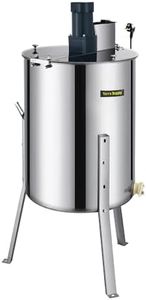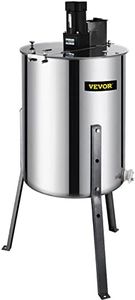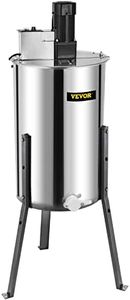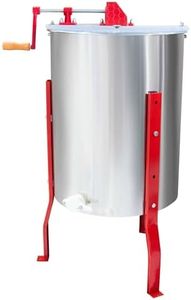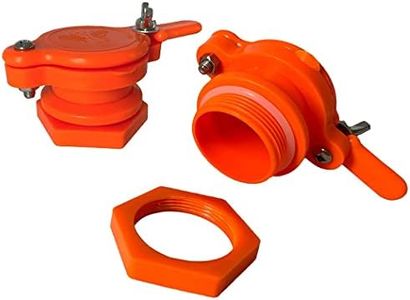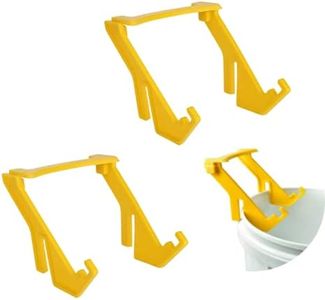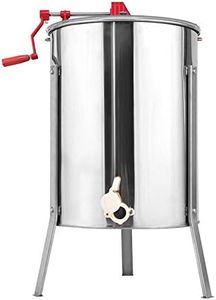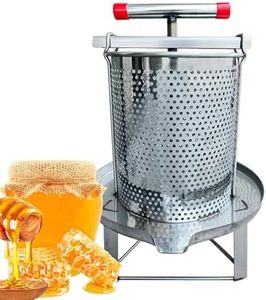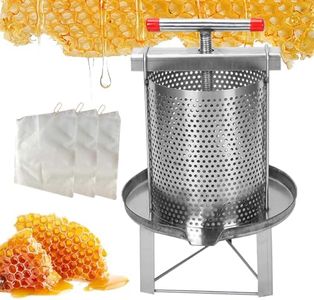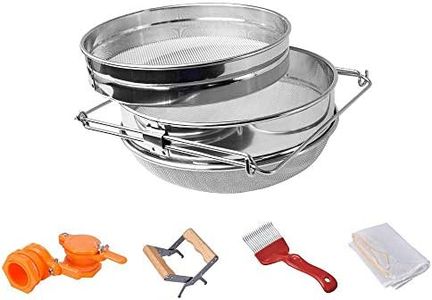We Use CookiesWe use cookies to enhance the security, performance,
functionality and for analytical and promotional activities. By continuing to browse this site you
are agreeing to our privacy policy
10 Best Honey Extractors
From leading brands and best sellers available on the web.Buying Guide for the Best Honey Extractors
Choosing a honey extractor is an important decision for anyone involved in beekeeping. A honey extractor helps separate honey from the wax comb without destroying the comb, making the process efficient and less wasteful. To find the right one for you, it’s crucial to understand the key specifications and how they relate to your beekeeping needs. By considering the types of extractors, capacity, construction material, operational mechanism, and cleaning requirements, you can select an extractor that will make harvesting honey smoother and more enjoyable.Type (Manual vs. Electric)This spec refers to how the honey extractor is powered. Manual extractors require you to turn a handle, which spins the frames inside, while electric extractors use a motor to do the same job with the push of a button. Manual extractors are generally best for hobbyists or those with a few hives as they are simpler and offer more control but are slower and require physical effort. Electric extractors are suitable for beekeepers managing multiple hives or those who want faster extraction with less labor. To choose the right one, think about how much honey you expect to extract at a time and how much physical effort you're comfortable with.
Frame CapacityThis specification tells you how many honeycomb frames the extractor can hold at once. Smaller extractors may accommodate two to four frames, which is perfect for small-scale or backyard beekeepers. Mid-sized extractors hold between four and eight frames, making them suitable for those with several hives. Large or commercial extractors can hold ten frames or more, ideal for those operating at a bigger scale. Your choice should be based on the number of hives you have and how much honey you expect to collect during each harvest. More capacity means faster processing but can be unnecessary for beginners with only a couple of hives.
Material (Stainless Steel vs. Plastic)The material of your honey extractor impacts durability, ease of cleaning, and longevity. Stainless steel extractors are more durable, resistant to rust, and easier to sanitize, making them a favorite among beekeepers who want a long-lasting tool. Plastic extractors are lighter and less expensive but may not last as long or be as robust for intensive use. When choosing, consider how frequently you will use the extractor, how much maintenance you're willing to do, and whether you want an item that will last for many years.
Extractor Type (Tangential vs. Radial)This indicates how the frames are positioned inside the extractor. Tangential extractors hold the frames so that only one side of the comb is extracted at a time, requiring you to flip the frames to extract both sides. These are suitable for smaller operations or delicate combs. Radial extractors spin the frames with the top bar facing out, which allows both sides of the comb to be extracted simultaneously, making them faster and more efficient for larger-scale beekeepers. To decide, consider your extraction volume and whether speed or comb care matters more in your process.
Ease of CleaningHoney extraction can be a sticky process, so it's important the extractor is easy to clean. Look for features like smooth surfaces without too many crevices, removable parts, and drain valves that allow all honey to flow out. Simpler designs tend to be easier to clean, which can save time and effort after each use. Think about how much effort you want to put into maintenance—if you prefer quick cleanups, prioritize models known for easy disassembly and smooth interiors.
